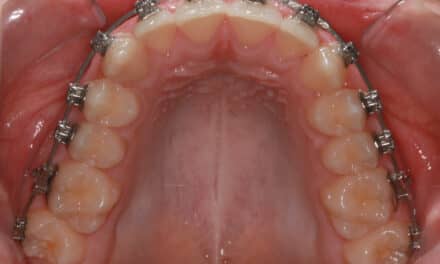How to measure, track, and set benchmarks to get your practice on track to recovery
By Roger P. Levin, DDS
Author’s note: For the time being, my writing on orthodontic practice management will focus on recovery from the COVID-19 crisis and its effects on orthodontic practices.
Orthodontic practices have always had overdue debonds. This is a normal part of orthodontic dentistry. According to the Levin Group Data Center, the data collection arm of Levin Group Consulting, the average orthodontic practice has 4% to 5% of its patients overdue for debond. And it’s not unusual to see some practices that have 10% or even 15% of debonds overdue. However, Levin Group has always recommended that it be reduced to under 2%.
During the COVID-19 crisis, the number of overdue debonds increased dramatically as patients were canceling appointments and not showing up to the office out of fear. Soon after, practices shut down completely. Now, with the resumption of some level of normal operations, overdue debonds should be one of the first practice performance systems to be addressed.
Measuring and Tracking
The first step in understanding orthodontic practice performance in any area is measurement and on-going tracking. Overdue debonds is one of the top five areas that we recommend every orthodontic practice measure and track consistently. At this time, we are recommending daily tracking of this key statistic.
Think about tracking overdue debonds this way:
There are important human vital signs like blood pressure, glucose, cholesterol, and heart rate that when measured and tracked, can determine a person’s health. If a person has no medical or health problems, there is no need to track these daily. In fact, one might argue that an annual physical is enough. But let’s change the scenario. You have your annual physical and find out that your blood pressure is extremely high—15% or 18% higher than it should be. You and your doctor agree that you need to lower your blood pressure by eating better and getting more exercise. This is a great plan. But it won’t mean much if you wait up to 12 months to check your blood pressure. In order to know if your plan is working you should check it weekly and maybe even daily to see what kind of progress you’re making.
Now apply this to overdue debonds, If overdue debonds are 100% overhead and overhead is an area that you want to control as your practice recovers from the coronavirus crisis, then ignoring the measurement and tracking of overdue debonds isn’t a good idea. As you start to address overdue debonds, you should measure and track them daily, expanding to weekly or monthly as they improve. If you fall within that coveted 2% or 3% overdue debond rate, which is highly unlikely right now, you can ignore all of this advice.
How to Use Benchmarks
In addition to tracking overdue debonds, you should map out in what months each overdue patient’s treatment will be completed. Naturally there will be variations, but this is the starting point and mapping out the months in which patients will finish will probably be around 80% accurate. Mapping this out helps you set benchmarks each month as to the number and percentage of overdue debonds. You’ll want to track this number and check each month to see if the target has been hit. And remember, you’ll also be adding new overdue debond patients along the way. So, in a given month, you might complete 10 patients who are overdue but add back two. Don’t forget to include these in the total and only work from the original numbers.
Set your benchmarks appropriately. Overdue debonds are pure overhead and your ultimate goal is to reduce them down to 2% or below. Some practices may have more of their overdue debonds completed early and others will have them staggered out over a longer period of time. Only by benchmarking and tracking carefully will you be able to know exactly where you stand so that you can continue to take appropriate actions.
Financial Constraints Contribute to Overdue Debonds
Both during and after the coronavirus crisis, there will be an increased number of families that will struggle to make orthodontic payments. In order to help get patients back in the office, orthodontic practices may need to offer patients a variety of payment plans, financial options, and discounts. Each practice will have to determine its financial position and what it can afford to offer patients to help them complete treatment, but this should be addressed in an internal meeting and possibly with the practice CPA.
We are living in an unusual period of time. Just as we have never seen anything like COVID-19 in our lifetimes, orthodontic practices have not faced complete shutdown and recovery from a pandemic and economic crisis. New times call for new measures—but the basics still apply. Overdue debonds must be measured and tracked so that they can be properly addressed. This will be a crucial component in your steady recovery towards higher levels of performance and success. OP
Read more: A five-step plan to reduce overdue debonds
Roger P. Levin, DDS, is the CEO and founder of Levin Group, a leading practice management consulting firm that has worked with over 30,000 practices to increase production. A recognized expert on orthodontic practice management and marketing, he has written 67 books and over 4,000 articles and regularly presents seminars in the United States and around the world. To contact Levin or to join the 40,000 dental professionals who receive his Ortho Practice Production Tip of the Day, visit levingroup.com or email [email protected].





